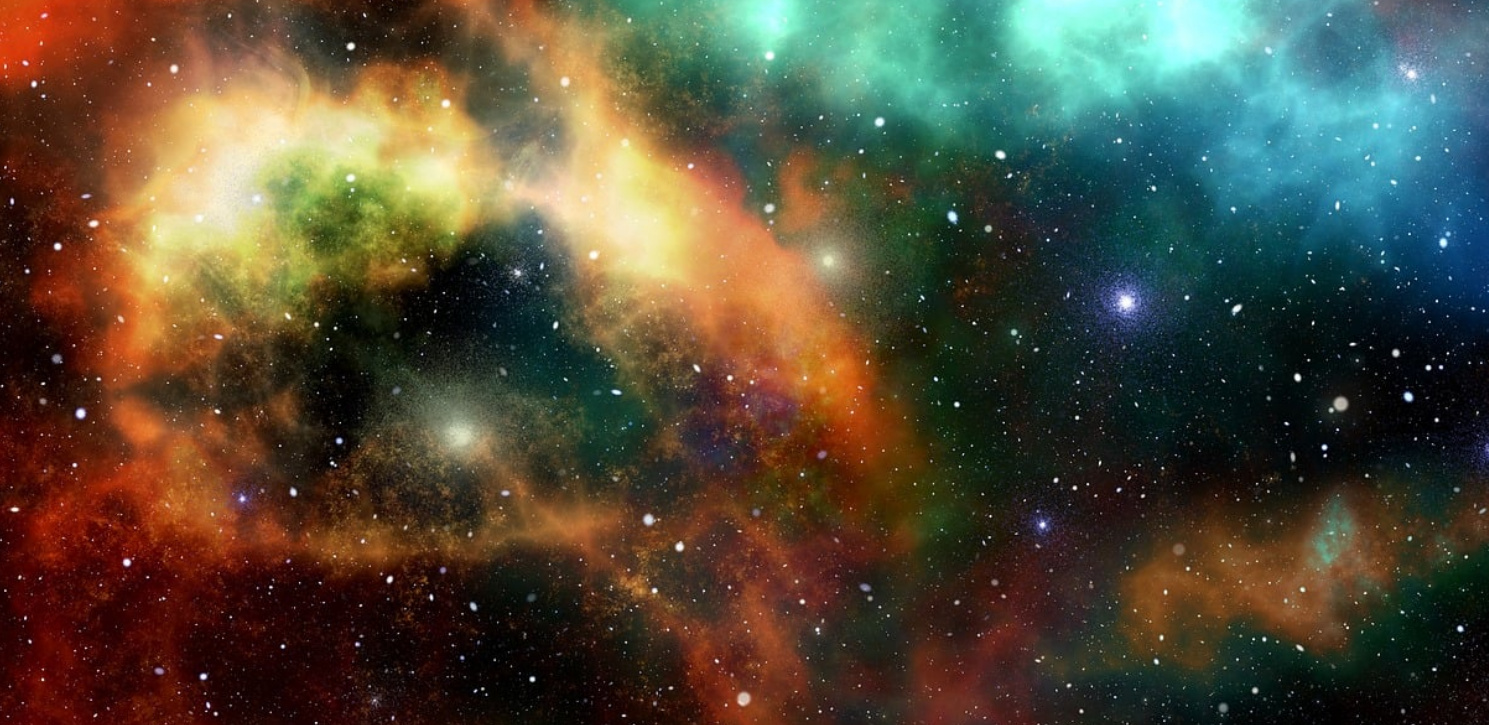The Great, Unsolvable Mystery
One moment the mind is agitated with worry. An hour later, it has relaxed. Different states of mind have their own texture, their own feeling, and we know them very well. But are we the knower of these changing states or are we the states themselves?
The knower is the irreducible “I am” of existence, the fundamental presence that knows all thoughts and emotions. Awareness is ever-present and unchanging. It does not become entangled in any state it witnesses. It does not become joyful when we feel happy, nor does it become agitated when we are troubled. It impartially witnesses each state, like a screen playing a movie, unaltered by the content. Through both comedy and tragedy, it remains uncolored, unstained. It is the aware presence that makes all experience possible.
Focused attention might feel like a higher state than a scattered one, but the same awareness registers both. Awareness does not increase or decrease. The only activity is the activity of the mind.
Awareness is, by nature, mysterious. It cannot be captured conceptually. Any attempt to do so is an activity of the mind trying to understand the mystery in which it appears. But it is impossible for that which is limited to know that which limitless.
What is there to do, then? Simply recognize it, honor it, and rest in it. ⬚
Consciousness and Dynamism Are Two Aspects of One Reality
The fundamental consciousness, the light of all knowing, is inseparable from its dynamic aspect of expression. Like a word and its meaning, they are inseparable. One is the unchanging, luminous ground; the other, the ceaseless flow of manifestation. Without dynamism, there is no manifestation within consciousness. Without consciousness, dynamism could not be known.
Together they are the essence of existence, a universal expression of this conscious potential. Every form, every thought, every thing arises and subsides within this ocean of consciousness. There is no true separation. What appears as distinct entities are simply different patterns within a unified field of awareness.
The quest to attain a higher state or to merge with a distant entity is rooted in ignorance about the nature of reality. We already are that. This recognition of consciousness is not intellectual. Infinite consciousness cannot be captured by the mind because the limited cannot know the limitless. Only consciousness knows consciousness. We are consciousness knowing itself.
For some, the recognition may occur through a deep inquiry into the nature of awareness itself. Others may be drawn to simply aligning with this conscious flow. Still others may experience the recognition through the contemplation of an object of beauty, seeing it as an expression of consciousness’s dynamic process.
The nondual perspective is an invitation to see beyond the surface of separation and to recognize the unified reality at the heart of existence. ⬚
Eliminating Worry
In life, there may be day-to-day worries. But there is a deeper worry, an existential anxiety that is inextricably linked to the belief of being a finite, separate entity, vulnerable to death and the vagaries of a hostile or indifferent universe.
When the belief of being a limited awareness is gone, existential fear dissipates. The fear of non-existence, the anxiety of ultimate separation, loses its grip.
In the absence of fear, inner peace arises. We sense the stability and equanimity at our core.
All that is truly needed is the cessation of the existential worry that we are separate beings. Worries will still arise, but they no longer carry the same weight. They become issues to be addressed, not threats.
The recognition of our limitless nature liberates us from the underlying fear which colors the experience.
The peace that passes all understanding is the quiet certainty of the unbounded Self. ⬚
Where do Hunches Come From?
So, how does the one ultimate subject communicate with itself when it appears as many? The communication isn't a dialogue between two separate beings, but rather a subtle interplay within the field of awareness.
Synchronicities are like echoes of inner states manifesting outwardly, while intuition is like a direct line to the inherent intelligence of the unified field of consciousness.
The apparent forgetting that allows consciousness to experience itself as the world isn't absolute. There are moments when the veil thins, and a synchronicity or intuitive insight creates a flash of lucidity, making the underlying unified reality more apparent.
These aren't external messages being sent. They are natural expressions within the fundamental reality that constitutes our being. Consciousness, localized as a finite mind, can experience these moments as guidance or meaningful alignment because, at its core, it is the whole. ⬚
Beyond the Personal
The ancient quest to understand the fundamental nature of reality has led many philosophers to grapple with the apparent divide between the inner world of consciousness and the outer world of physical phenomena. Dual-aspect monism, when it identifies the underlying substance as consciousness,* suggests that what we perceive as mind and matter are not separate entities but rather two inseparable facets of a unified, conscious ground.
Such a perspective, where consciousness is the fundamental substance expressing mental and physical aspects, offers an elegant resolution to the mind-body problem without resorting to dualism.
However, this perspective presents a point of departure from the traditional concept of a personal God. The idea of God as an individual being, however powerful or transcendent, interacting with the world and its inhabitants, answering prayers, and possessing personal attributes like emotions and judgment becomes challenging to reconcile with dual-aspect monism.
If the underlying substance is consciousness, and we, along with the entire universe, are expressions of consciousness, how can a separate, personal God exist “out there.” Where would this personal God exist outside of the very consciousness that constitutes all reality? To assert a personal God as distinct from this fundamental consciousness introduces a duality that the dual-aspect monistic view seeks to overcome.
In this context prayer shifts away from a petition directed to an external being to simply resting in being, as being; and from this sense of fullness, peace flows. The love and compassion attributed to a personal God is indeed the very nature of this unified consciousness which recognizes that there is no fundamental other.
So, from the nondual perspective, that which is called a personal God might be better understood as a dynamic, creative aspect within the unified consciousness.
While the language of “God” can be used to describe this underlying conscious substance, the attribute of “personal” is incongruent with the core tenet of dual-aspect monism grounded in consciousness. The ultimate reality, from this viewpoint, is an impersonal (in the sense of not being a separate individual), unified field of awareness that expresses itself as the animate and inanimate universe.
Therefore, the divine is not something separate to be sought. It is the very is-ness of our being, the fabric of the universe.
That said, however, a “personal God” is real in the sense that the focused attention is real; the yearning in the heart is real; the spoken words are real; the feelings of grace and gratitude is real. In other words the experience of a personal God is real and potentially beneficial. It just may not be the whole truth. ⬚
*Or, to use religious language, God.
Judgment vs. Discernment
Judgment stems from the ego's need to define boundaries, to categorize and label in order to solidify its sense of separate existence. Judgment is the desire to maintain a particular self-image or worldview. When we judge, we are projecting a limited perspective onto reality. This act of separation and evaluation reinforces the illusion of duality, further obscuring the underlying unity.
Discernment, however, is not a product of the reactive, ego-driven mind, but rather a clear, impartial knowing that arises directly from the inherent intelligence of consciousness itself. It is an impersonal function, akin to the way our senses register information without adding emotional weight or subjective interpretation. Discernment sees the situation as it is, without the overlay of personal history or the need to establish superiority and separation. Just as our eyes can distinguish between a tree and a rock without judgment, discernment allows us to see the nature of a situation or action with a similar level of unbiased clarity. Discernment understands the nature of what is unfolding and responds appropriately.
As the illusion of separation is met with understanding, the need to judge and label from a limited, personal perspective gradually diminishes. What arises instead is a natural clarity, an impersonal knowing that transcends dualistic thinking. ⬚
Pantheism vs. Panentheism
The human mind, in its quest to make sense of the universe, constructs models of reality that involve clear distinctions. One of the most common in religious circles is the separation between a Creator—a divine entity existing independently of the universe—who brings creation into being. While this dualistic framework may provide a sense of comfort, other perspectives, like pantheism and panentheism, offer a more unifying view. The nondual understanding aligns with the latter.
A traditional analogy for creation is that of a potter separate from the clay. By extending this analogy to the universe, we imagine a God who is separate from creation, an infinite God who stands at a distance. But as we’ve previously explored, in what larger reality would these two entities, God and creation, exist? And how can that which is finite exist apart from that which is infinite? Wouldn’t the infinite, by definition, necessarily include the finite?
Pantheism asserts that God is everything, and everything is God. In this view, God is identical with the universe; there is no existence of God outside or beyond the cosmos. The universe, in its totality, is the divine. While this is a move towards monism, it can imply that if the universe were to cease to exist, God would also cease to be. So pantheism does not fully account for a transcendent aspect of the divine, a potentiality that is not exhausted by manifestation.
Panentheism, however, holds that God is in everything, and everything is in God, but God also transcends everything. God is not merely identical with the universe, but contains the universe while simultaneously being more than the universe. Therefore, the distinction between the creator and the created is not a boundary between two separate entities, but a way of conceiving a single reality from different vantage points. The creator is consciousness in its infinite, unmanifest potential. The created is this same consciousness in its manifest, apparent forms—objective experience arising within and as universal awareness. So rather than a potter standing apart from the pot, a more accurate analogy is a body of water with ripples upon its surface. The ripples are only an appearance, an activity, of the water. The ripples appear, interact with one another, and disappear, yet the water remains, ever-present.
Panentheism, then, suggests that the divine is not somewhere “out there” to be found, but is the very essence of our being, the seamless reality of the entire cosmos. It is the fundamental reality that is both the container and the contained, the source and the expression, all within a boundless, self-aware whole of awareness. ⬚
Awareness, Mind, and the Act of Perception
The nondual understanding suggests that the ultimate reality, the ground of all being, is undifferentiated consciousness, the unmanifest source from which everything arises. In its essential nature, this pure awareness, in the absence of a localized, finite mind, does not think or perceive in the way we commonly understand these activities.
For the acts of thinking and perceiving to occur, awareness must assume a specific point of view in the form of a finite mind. This finite mind does not become a separate entity; it is awareness manifesting within necessary limitations. Through this localization, awareness gains the capacity to differentiate, to categorize, and to process information from the vast field of potential, and the thoughts that flow through awareness are universal patterns interacting with memory, concepts, and sensory input.
Thought and perception, therefore, are not activities of a separate entity, but rather manifestations within a unified field of awareness, dynamic expressions of awareness experiencing itself in the world.
In other words, there is not a multiplicity of awarenesses; there only seems to be a multiplicity of forms. ⬚
Nondual Awareness: Being In the World
Awareness isn't a stand-alone, private consciousness looking out at a separate, external universe. There is only one, unified field of consciousness. This unified field is the fundamental being-ness, the ground of existence, the “one eye which looks out from all knowing creatures,” according to Schopenhauer. Meister Eckhart put it this way: ”The eye through which I see God is the same eye through which God sees me; my eye and God's eye are one eye, one seeing, one knowing, one love.”
From this perspective, when a new awareness is birthed into the world, it is not a separate awareness entering a pre-existing world. Rather, it is the appearance within awareness of a seemingly separate entity birthed into the world. All perceptions, thoughts and feelings arise within one field of knowing.
The world is not a collection of independent objects observed by awareness; the world is awareness experiencing itself as those objects. The tree in your backyard is awareness appearing as a tree. The sound you hear is awareness appearing as a sound. The feeling in your body is awareness appearing as a sensation. There is just awareness knowing awareness.
There is no “thing” called awareness that is distinct from the “things” of the world. There is only the continuous, seamless arising of phenomena within awareness in a variety of forms. The sense of a private, individual “I” observing a separate “world” is an illusion, a particular manifestation within the grand play of consciousness.
This perspective does not deny the reality of trees or sounds or bodies. They are real, but their reality is understood to be fundamentally inseparable from awareness. Without awareness there can be no objective or subjective experience.
The nondual understanding presents a shift from being a spectator to recognizing oneself as inherently one with the whole of reality.
Joy and sorrow become part of the play of consciousness, witnessed and experienced as natural expressions, without the egoic entanglement that creates psychological suffering.
Nondual awareness isn't a passive state, but a dynamic engagement with life from a place of fundamental unity. It is awareness expressing itself in the world, as the world, through a particular body-mind. ⬚









